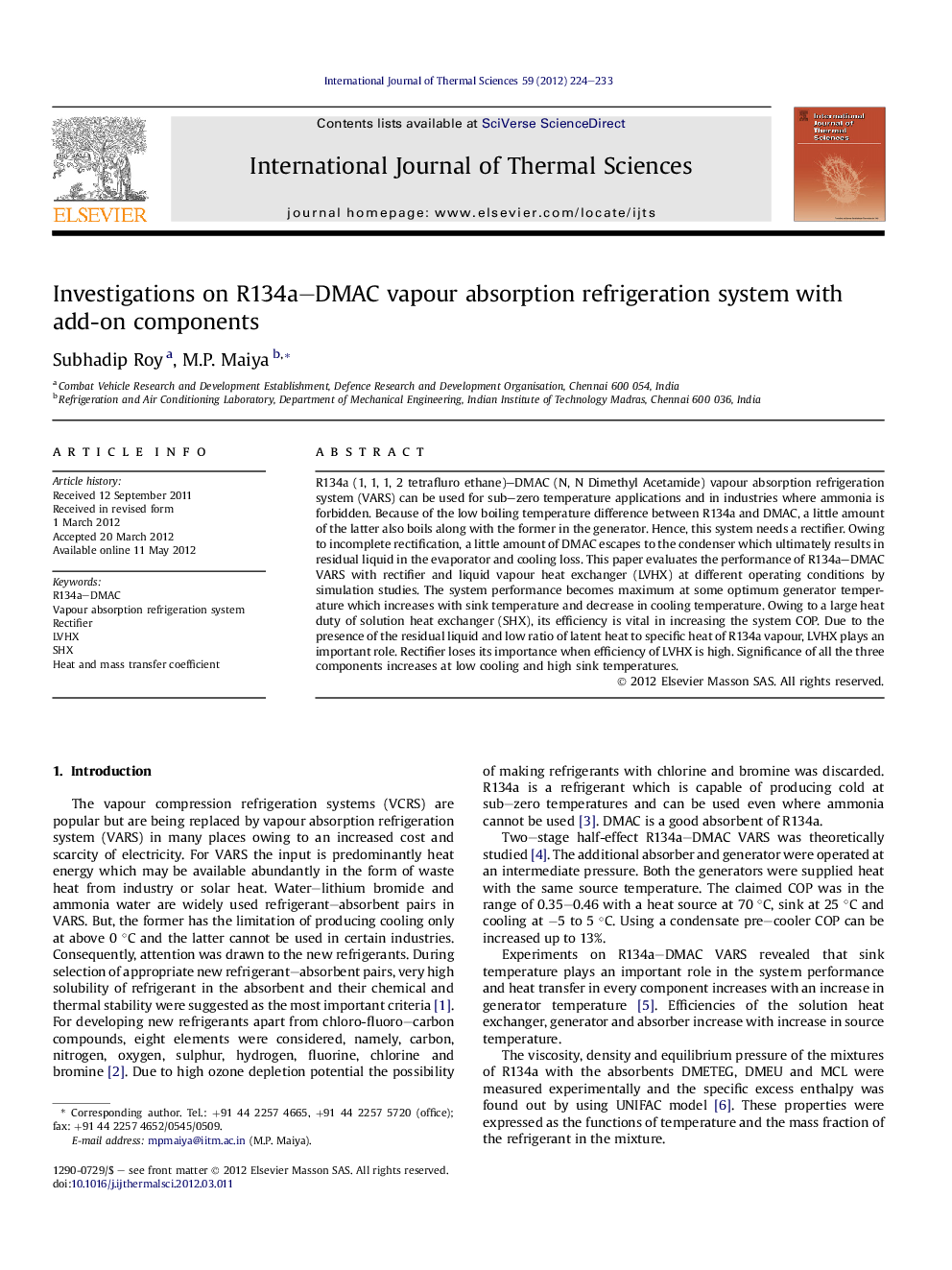| Article ID | Journal | Published Year | Pages | File Type |
|---|---|---|---|---|
| 668891 | International Journal of Thermal Sciences | 2012 | 10 Pages |
R134a (1, 1, 1, 2 tetrafluro ethane)–DMAC (N, N Dimethyl Acetamide) vapour absorption refrigeration system (VARS) can be used for sub–zero temperature applications and in industries where ammonia is forbidden. Because of the low boiling temperature difference between R134a and DMAC, a little amount of the latter also boils along with the former in the generator. Hence, this system needs a rectifier. Owing to incomplete rectification, a little amount of DMAC escapes to the condenser which ultimately results in residual liquid in the evaporator and cooling loss. This paper evaluates the performance of R134a–DMAC VARS with rectifier and liquid vapour heat exchanger (LVHX) at different operating conditions by simulation studies. The system performance becomes maximum at some optimum generator temperature which increases with sink temperature and decrease in cooling temperature. Owing to a large heat duty of solution heat exchanger (SHX), its efficiency is vital in increasing the system COP. Due to the presence of the residual liquid and low ratio of latent heat to specific heat of R134a vapour, LVHX plays an important role. Rectifier loses its importance when efficiency of LVHX is high. Significance of all the three components increases at low cooling and high sink temperatures.
► R134a–DMAC VARS with add-on components namely rectifier and liquid vapour HX. ► Rectifier and liquid vapour heat exchanger (LVHX) are necessary in R134a–DMAC VARS. ► Efficient solution heat exchanger (SHX) is necessary owing to its high heat duty. ► Roles of LVHX, rectifier and SHX increase at high sink and low cooling temperatures. ► Rectifier looses importance at high efficiency of LVHX.
